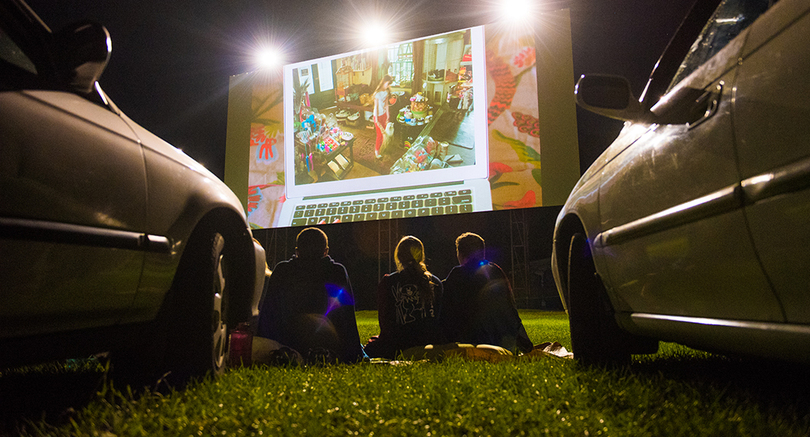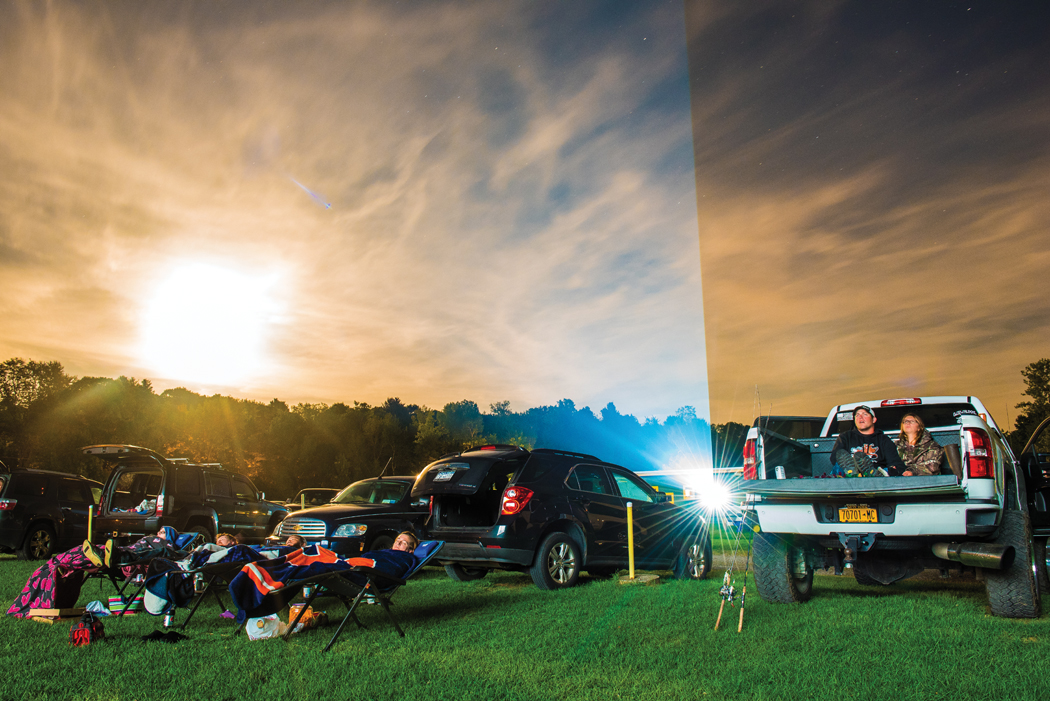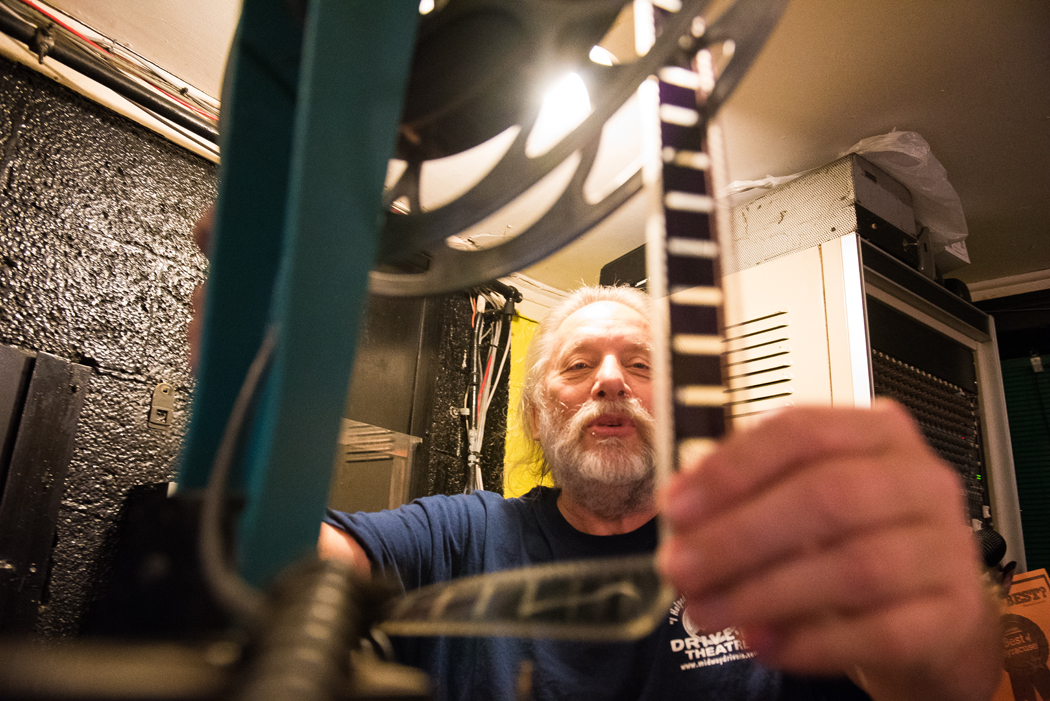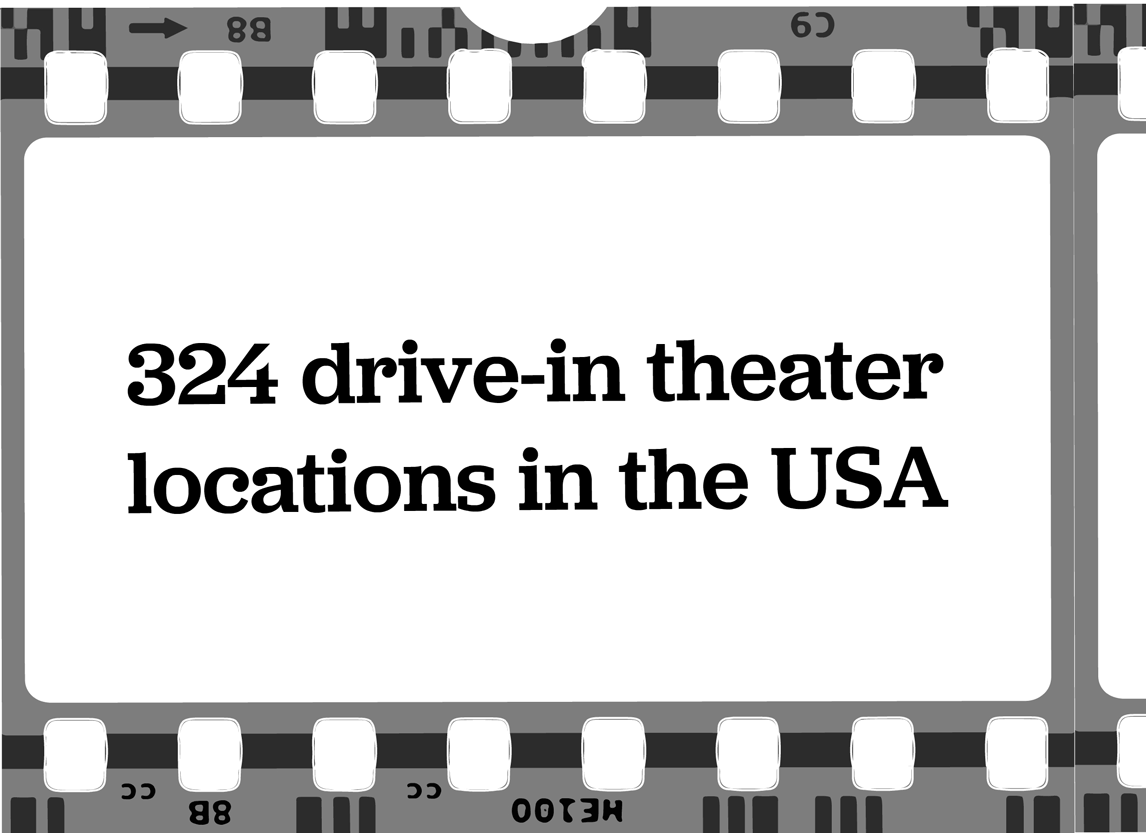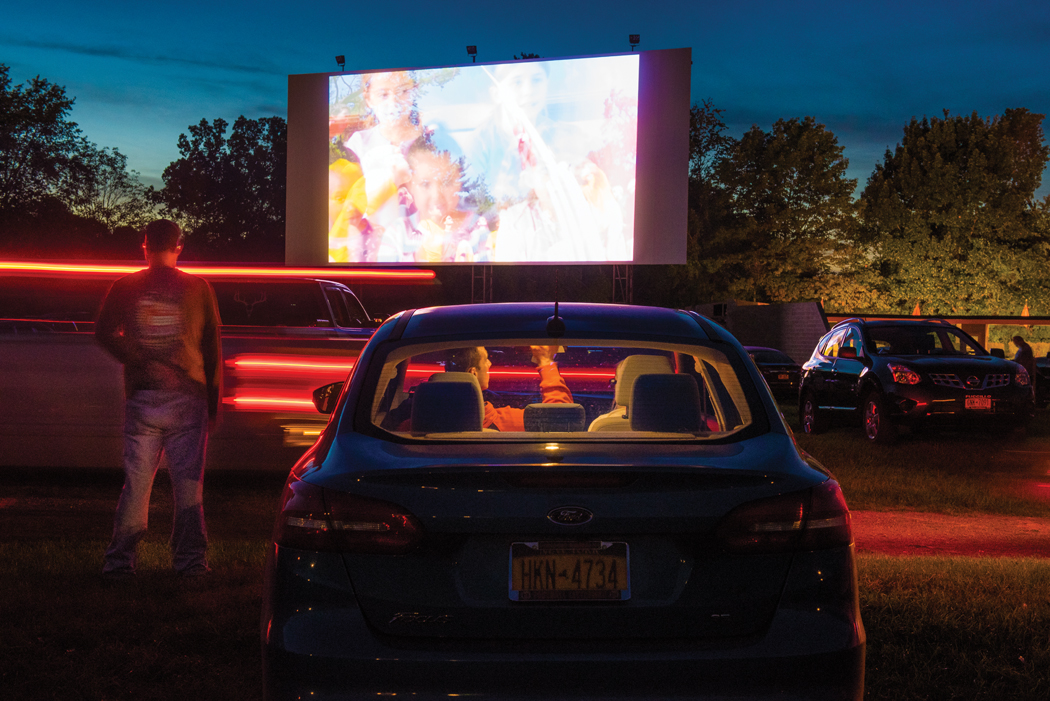When drive-ins were built, they were mainly placed on cheap farmland. But as communities grew, the need for land increased and property value went up. Drive-ins weren’t practical.
“We are only open in the evenings, pretty much have two shows a night between 8 p.m. and midnight, and the majority of our business is only happening on the weekend, and on top of that in the northeast it’s seasonal,” Cohen said. “Six months out of the year you aren’t even open for business, so how can you justify it being open?”
There used to be five drive-ins in Onondaga County, some just a short drive from the Syracuse University campus, but their imprints have long since faded.
But even a perfect location doesn’t guarantee success; the switch from film to digital was too big of a leap for some owners, while others didn’t have family or staff willing to continue the demanding seasonal job.
Cohen, 48, still has a long time before he retires, but doesn’t have an heir to the largest drive-in theater in the northeast. Transit boasts five screens and a sprawling, rocky parking lot in a prime location between Buffalo and Niagara Falls.
“My family doesn’t want anything to do with it,” Cohen said. “Maybe I will send out some golden tickets, and be like Willy Wonka, when that time comes, and find somebody with a good heart that wants to keep it open.”
This interactive map highlights the current drive-ins open in New York state and the ones that have closed in Onondaga County.
On a cool September night at the end of drive-in season, John Nagelschmidt Jr., the Midway’s co-heir, is leaning against the far wall of the projection booth.
“What year were you born?” he asks.
“1996.”
“Was it in the summer time?”
“Yeah, actually, Aug. 9.”
Turning to a small desk in the corner, he rifles through piles of miscellaneous junk, before pulling out a tattered notebook.
Quickly, turning the stained and faded pages, he points with a yellowed smoker’s fingertip toward the bottom of the page.
Aug. 9-15 Harriet The Spy
Twister
The Arrival
The small book, which begins in the ‘70s, acts as a chronicle of both movies that define popular culture and the drive-in customers’ most intimate moments.
A small child seeing an unimaginable world during “Star Wars IV: Empire Strikes Back.”
A tentative first kiss that years later ends at the altar.
A widow sprinkling the ashes of her husband at the spot they had their first date.
“It just seems to be a neat little escape for people,” Nagelschmidt Jr. said. “It’s sort of frozen in time.”
At a quick glance, it’s easy to see what he means. The original 35mm film cartoons and graphics still crackle on the screen before the movie and during intermission.
Cartoon snack bar foods dance across the screen singing, “Let’s all go to the Lobby,” shortly after a psychedelic 1960s Pepsi commercial flashed madly proclaiming, “Son of a gun, it’s refreshment time!”
The snack bar’s early-1900s-style art deco curves gently glow with teal and white carnival lights, beckoning customers into the theater’s main source of revenue.
The theater is nestled against a wooded backdrop that gives no hints of the current year.
But a closer look muddles that nostalgic vision. 2000s-era automobiles sit in the audience pointed at jagged angles toward the recently-installed 80×40 steel screen.
Movies are shipped to the theater as hard drives that look more like GameCube cartridges than film reels.
Nagelschmidt Sr., 73, notices every difference, and oftentimes misses the way things used to be.



